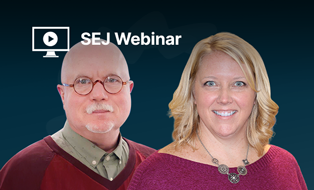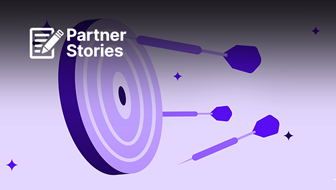The rapid advancements in artificial intelligence and machine learning have dramatically reshaped the SEO and digital marketing landscape, and attending a conference is arguably one of the best ways to benefit from the latest industry insights while expanding your professional network.
Spending hours researching articles, forum discussions, and other online resources is always valuable, but attending conferences can significantly enhance your learning experience.
By directly interacting with industry professionals and experts, having the opportunity to ask them questions offers a depth of knowledge that complements and goes beyond what self-guided online research can provide.
In short, attending conferences, whether in-person or virtual, offers a wide range of benefits:
- Networking opportunities.
- Learning from experts.
- Interactive workshops.
- Staying updated with trends.
- Exposure to new tools and discovering the marketplace.
- Direct Q&A sessions.
- Receiving feedback from experts on your work.
- Building your company or personal brand.
- Competitive insights.
- Inspiration and creativity.
- Unique case studies available only to conference attendees.
To help you decide which ones you should attend, we’ve compiled a list of the best SEO conferences in 2025.
Whether you’re a road warrior who wants to attend as many events as possible or an introvert who only wants to attend digitally, there are sure to be several conferences that fit your needs.
So, without further ado, here is our list of the best online and in-person SEO conferences this year.
Here are some SEO and digital marketing conferences and events coming up this year. Mark your calendar now so you don’t miss them.
SEO & Digital Marketing Events For 2025
- 1. MozCon 2025
- 2. INBOUND 2025
- 3. SEOktoberfest G50 Summit
- 4. Content Marketing World
- 5. Brighton SEO
- 6. ADworld Experience
- 7. WTSFest 2025
- 8. Ahrefs Evolve 2025
- 9. B2B Marketing Expo 2025
- 10. NESS (News & Editorial SEO Summit)
- 11. State Of Search 2025
- 12. SERP Conf.
- 13. DigiMarCon
- 14. International Search Summit (IIS) Barcelona 2025
- 15. Tech SEO Connect
- 16. SearchNorwich
- 17. Social Media Marketing World
- 18. The eCommerce & Omnichannel Retail Conference (eTail)
- 19. Search Marketing Expo (SMX Munich)
- 20. Friends Of Search Fest
- 21. Adobe Summit
- 22. Growth Marketing Summit 2026
- 23. Pubcon Austin 2026
- 24. Include Your SEO Conference
MozCon 2025
- Website
- Date:
- August 12, 2025
- November 6, 2025
- Format: In-person.
- Location: London, UK, New York USA
- Speakers: Areej AbuAli, Dr. Pete Meyers, Helen Pollitt, Lily Ray, among others.
- Cost: Early bird tickets start at £499 for London, $649 for New York.
- About: The annual digital marketing conference hosted by Moz, this conference features networking and expert sessions from SEO industry leaders, as well as experts in mobile search, conversion optimization, and search marketing.
Below is a sample talk from past MozCon.
INBOUND 2025
- Website
- Date: September 3-5, 2025.
- Format: In-person or online.
- Location: Boston, MA.
- Speakers: Dale Bertrand, Jen Spencer, and Carole Mahoney among others.
- Cost: In-person from $1399, or $1,999 for the VIP pass.
- About: This annual event is powered by HubSpot, bringing together global thought leaders for a hybrid conference discussing marketing, sales, and customer success operations. It covers a wide range of topics and gives attendees the opportunity to network and learn from some of the best in the business.
Below is a comprehensive review from attendees.
SEOktoberfest G50 Summit
- Website
- Date: September 21-26, 2025.
- Format: In-person
- Locations: Munich, Germany and Kitzbühel, Austria
- Speakers: Jes Scholz, John Shehata, Andrea Volpini, Eric Wu among others.
- Cost: $7,000. Everything is included: a luxury suite, all meals, all drinks, and even complimentary childcare.
- About: The SEOktoberfest G50 Summit has been the world’s leading SEO think tank since 2008. It kicks off with the classic “SEOktoberfest” event at the famous Oktoberfest on Sunday, September 22, before heading to Kitzbühel, Austria, for the G50 Summit at the spectacular Stanglwirt 5* Wellness and Spa Resort. Each year, all experts compete for the coveted SEO World Championship. All conversations and discussions are confidential, and attendees abide by the main rule: don’t blog, don’t tweet, don’t tell.
You can learn from pictures on their official Facebook page to see what the event looks like.
Content Marketing World
- Website
- Date: September 15-17, 2025.
- Format: In-person or online.
- Location: San Diego, CA.
- Speakers: Ann Handley, Robert Rose, Cassie Kozyrkov, and many others.
- Cost: Super Early bird in-person tickets start at $1199; livestream only for $899.
- About: Over four days, attendees will learn strategies for building winning SEO teams, systems, and processes. With more than 100 sessions, workshops, and industry forums, you can choose the topics and sessions that are relevant to you. Thousands of marketers and representatives from numerous global brands will be in attendance.
Here is an example video from last year’s conference.
Brighton SEO
- Website
- Date:
- September 23-24, San Diego
- Format: In-person and online.
- Location: San Diego, US.
- Speakers: Adriana Stein, Dan Taylor, and Amanda Walls, among others.
- Cost:
- In-person early bird starts at $615 and rises after July 31, 2025, to up to $2050; the virtual video bundle is £250.
- You can also join a waitlist for free tickets, which has a 20% approval rate.
- About: This twice-yearly conference is attended by thousands of digital marketers worldwide. It features training workshops, sessions on niche topics, social networking events, and talks from experts.
Below is video feedback from attendees.
ADworld Experience
- Website
- Date: October 2-3, 2025.
- Format: In-person and online.
- Location: Bologna, Italy.
- Speakers: Fiona Bradley, Tom Breeze, Valerio Celetti, and many others.
- Cost: Early bird in-person tickets start at €529; livestream only for €199.
- About: Bringing together PPC experts from across the globe for the largest paid ad and conversion rate optimization event in Europe – and the largest real PPC-based conference in the world.
WTSFest 2025
- Website
- Dates:
- October 7, Philadelphia
- November 27, Melbourne
- Format: In-person & Recording tickets available.
- Locations: Philadelphia, PA, Melbourne, AU
- Speakers: Chloe Smith, Sophie Fell, Emina Demiri-Watson and more.
- Cost: From £99 to £499 in London, $299 in Portland.
- About: The Women in Tech SEO Festival is a full-day conference coming back to London for the fifth time on International Women’s Day, expanding this year to 2 more locations in Germany and the USA. A community-led one-track conference featuring a line of 10 brilliant speakers on analytics, search, technical SEO and empowerment talks.
Below is a snapshot from the conference venue sidelines, where you can get a real-life overview of the conference.
Ahrefs Evolve 2025
- Website
- Date: October 14-15, 2025.
- Format: In-person.
- Location: Hotel Intercontinental San Diego, CA.
- Speakers: TBA. Past speakers include Lily Ray, Aleyda Solis, Cyrus Shepard, and many others.
- Cost: $699-$2999;
- About: Ahrefs Evolve brings together five hundred SEO and digital marketing professionals from around the world into the same physical space so we can meet face to face, form genuine connections, learn from each other, and grow as a community.
Meet, hang out, and build genuine connections with professionals and executives from big brands and international agencies.
Below is a video by Ahrefs’ CEO Tim Soulo presenting the venue.
B2B Marketing Expo 2025
- Website
- Date:
- October 22-23, 2025
- Format: In-person.
- Locations: Miami, FL, and Los Angeles, CA.
- Speakers: Ryan Ross, Winston T Marshall, David Jarvis, and many others.
- Cost: Free.
- About: Featuring education masterclasses for marketing professionals, this annual conference covers a variety of tracks, including advertising and promotion, content and experience, and commerce and sales. Hundreds of suppliers and speakers will be on hand to discuss the state of the industry and recent happenings.
Below is the video from the real-life experiences of attendees.
NESS (News & Editorial SEO Summit)
- Website
- Date: October 28-29, 2025.
- Format: Online.
- Speakers: TBA. Past speakers include Martin Splitt, Rand Fishkin, John Shehata, and many others.
- Cost: Early bird tickets start at $299; video recordings are available for $299.
- About: The News and Editorial SEO Summit (NESS) is an online event dedicated exclusively to all things SEO for news publishers. The NESS presents a unique opportunity to learn from the biggest brands and smartest minds in publishing and SEO.
Below is one of the sessions from past events.
State Of Search 2025
- Website
- Date: October 27-28, 2025.
- Format: In-person and online.
- Location: Grapevine Convention Center, TX.
- Speakers: TBA. Past speakers include Ryan Jones, Carolyn Shelby and many others.
- Cost: $997.
- About: The State of Search brings together top speakers from the digital marketing field to cover various topics, from search engine optimization to emerging technology, lead generation, and display advertising.
Below is one of the talks from past conferences by Eric Enge.
SERP Conf.
- Website
- Date: 14 October, 2025.
- Format: In-person.
- Location: Vienna, Ariana Event Hall.
- Speakers: Judith Lewis, Bibi the Link Builder, Johan v. Hülsen, and many others.
- Cost: Early bird tickets start at $299, with a final price of $849.
- About: SERP Conf. is an international SEO, e-commerce, and digital marketing event, including a conference, exhibition, and networking with leading experts. It brings together the SEO and marketing community in one place with the goal of supporting businesses and sharing best practices for online development.
Below is a video by the organizers presenting the venue from a past event.
DigiMarCon
- Website
- Date: On-going throughout 2025.
- Format: In-person and online.
- Location: Various global locations.
- About: DigiMarCon offers a range of events throughout the year, both virtual and in-person conferences in various global locations. Digital Marketing Conferences is a global series of events bringing together thought leaders from the digital marketing, media, and advertising industries. These conferences focus on emerging strategies, the latest technology, recent best practices, networking, and collaboration.
International Search Summit (IIS) Barcelona 2025
- Website
- Date: 13 November, 2025.
- Format: In-person.
- Location: World Trade Center, Barcelona, Spain.
- Speakers: TBA. Past speakers include Gary Illyes, Mordy Oberstein, Olga Andrienko, Navah Hopkins, among others.
- Cost: Tickets from €750, including access to ISS and International SEO Workshop.
- About: The International Search Summit is dedicated entirely to global digital marketing and learning the strategies to drive sales and growth around the world. With a focus on people, as well as learning, networking sessions are integrated into the whole event to ensure attendees leave with new knowledge and new connections. In the past, there have been 3 tracks with 30 sessions, all focused on international SEO and PPC. There will also be a deep dive International SEO Workshop running on November 14.
Below is a review from attendees.
Tech SEO Connect
- Website
- Date: December 4-5, 2025.
- Format: In-person.
- Location: CAM Raleigh, Raleigh, North Carolina.
- Speakers: past speakers include Aleyda Solis, Rick Viscomi, Jori Ford, Fabrice Canel, and many others.
- Cost: $536.
- About: This two-day event, by technical SEOs for technical SEOs, is designed to help you dive deeper into technical SEO and connect with like-minded people from around the world. Due to venue size restrictions, a limited number of tickets are available on a first-come, first-served basis.
SearchNorwich
- Website
- Date: TBA.
- Format: In-person and virtual.
- Location: TBA.
- Speakers: TBA. Past speakers include Martin Splitt, Mark Williams-Cook, Erika Varangouli, among others.
- About: SearchNorwich sessions focus on SEO and search marketing with a ‘share, not sell’ approach, avoiding sales pitches. It provides an opportunity to learn, connect, and exchange ideas in a supportive community.
Below is a sample speech from the conference.
Social Media Marketing World
- Website
- Date: TBA 2026.
- Format: In-person and on-demand.
- Location: San Diego, CA.
- Speakers: Michael Stelzner, Mari Smith, Melissa Laurie, and many others.
- Cost: In-person starts at $1,497–$1,997; streaming and on-demand are $997.
- About: Bringing together top social media marketing pros, this conference is not directly focused on SEO but features sessions on organic social marketing, paid social marketing, social strategy, content marketing, and several workshops.
It strives to immediately provide attendees with ideas they can implement for their clients or businesses.
Below is a real-life experience of what it looks like by Latasha James.
The eCommerce & Omnichannel Retail Conference (eTail)
- Website
- Date: February, 2026.
- Format: In-person with on-demand available for a limited time following events.
- Location: Palm Springs, CA.
- Speakers: Kristin Shane, Drew Green, Dave Spector, and Anngelica Newland, among many others.
- Cost: In-person starting at $899-$4,199.
- About: With a focus on digital commerce, this event is a four-day retreat designed to help ecommerce and omnichannel stores uncover new ways to maximize profits from some of America’s most successful retailers. Check out the full series of conferences throughout the year in Boston, Toronto, Canada, and London, England.
Preview of the conference from past attendees.
Search Marketing Expo (SMX Munich)
- Website
- Date: March, 2026.
- Format: In-person.
- Location: Munich.
- Speakers of 2025: Bartosz Góralewicz, Cindy Krum and John Shehata, among others.
- Cost: Starting from €699-€2,199.
- About: SMX Munich is large event with +1000 attendees focused on search marketing, attracting a diverse range of industry professionals. It offers a valuable opportunity for networking, learning, and discovering new tools and practices in the field of SEO, Social Media and PPC.
Below is a presentation from the past that can help you grasp what the event’s content looks like.
Friends Of Search Fest
- Website
- Date: TBA 2026.
- Format: In-person.
- Location: Amsterdam, Netherlands.
- Speakers: Jarno van Driel, Lily Ray, Jes Scholz, and Wil Reynolds, among others.
- Cost: Starting from €538,45-€659,45.
- About: One of Europe’s largest search conferences. The event brings together consultants, marketers, and business owners to share their insights on SEO, PPC, and digital marketing. This three-day event will feature sessions designed to provide attendees with actionable insights and the latest information from industry experts.
In the video below, you can see what a real-life conference looks and feels like.
Adobe Summit
- Website
- Date: TBA 2026.
- Format: In-person, on-demand sessions available.
- Location: Las Vegas, NV.
- Speakers: Shantanu Narayen, Ed Bastian, Emma Springham, and many others.
- Cost: For non-profits, $1,595 and $1,795–$2,295 with various discounts available; on-demand sessions after the event are free.
- About: The Adobe Summit features a massive variety of guests and keynotes, including actors, producers, CEOs, and Olympians. The in-person conference includes sessions, hands-on labs, meals, and evening events. You can register for the virtual summit for free to access keynotes and speaking sessions after the event.
Preview of the conference from Adobe.
Growth Marketing Summit 2026
- Website
- Date: June 16, 2026.
- Format: In-person.
- Location: Frankfurt am Main, Germany
- Speakers: Michael Aagaard, Lukas Vermeer, and Erin Weigel, among others.
- Cost: Early bird tickets start at €499.
- About: Assembling growth marketers and digital professionals worldwide, this single-day event features world-class speakers sharing their expertise on flexible and data-driven marketing solutions.
Here is what the venue looks like and some video feedback from attendees.
Pubcon Austin 2026
- Website
- Date: TBA.
- Format: In-person.
- Location: AT&T Conference Center, Austin TX
- Speakers: Eric Enge, Jennifer Slegg, Greg Gifford, Jesse McDonald and many others.
- Cost: $699-$1299. video recordings are available for $249-$349.
- About: Pubcon, a “fullstack marketing conference,” is in its 21st year. This two-day, in-person event features keynotes from Google and Bing and a packed schedule of conference sessions. Based on your interest, choose between different topic tracks such as organic SEO, marketing potpourri, site reviews, and ChatGPT and AI content.
Here is a snapshot of what it looked like during past conferences.
Great SEO Pros Never Stop Learning
For an SEO professional, experience is important – but not nearly as vital as staying up to date.
While you can keep an eye on what’s going on in the world of search engines, paid advertising, and digital marketing by reading expert publications (like this one, for example), it’s also great to meet with other people who are performing the same job.
This gives you a chance not just to interact with them but to ask questions and develop relationships that could reap rewards far down the line. And SEO conferences are a great place to do this.
So, whether you’re trying to brush up on the basics, identify the latest techniques, or just take a trip on the company dime, the above events are a great place to start.
Include Your SEO Conference
This article is updated whenever possible to reflect frequent changes to event schedules and details.
If you’re hosting an upcoming SEO event and want it listed, please submit it via the form below:
More resources:
- How To Build A Global Community By Running Industry Events
- Professional Growth: The Value of Smaller SEO Events & Masterminds [Podcast]
- 7 Tips For Landing Your Dream SEO Job
Featured Image: l i g h t p o e t/Shutterstock
FAQ
Are There Free SEO Conferences?
Yes, BrightonSEO is a bi-annual conference that offers a free virtual stream alongside paid in-person events. They also offer free single-day passes for the in-person event, but these are limited and subject to availability.
B2B Marketing and Expo 2025 are free to attend, while Adobe Summit offers on-demand sessions after the event.
I am a Beginner, How Do I Choose the Right SEO Conference for Me?
Select conferences offering foundational learning and networking. Choose based on content relevance (e.g., content marketing, PPC, social media), speaker lineup, and cost. Prefer accessible locations and ones which offer a free access such as Brighton SEO or B2B Marketing Expo.
Additionally, attending free SEO & digital marketing webinars is also a great way to enhance your knowledge.





